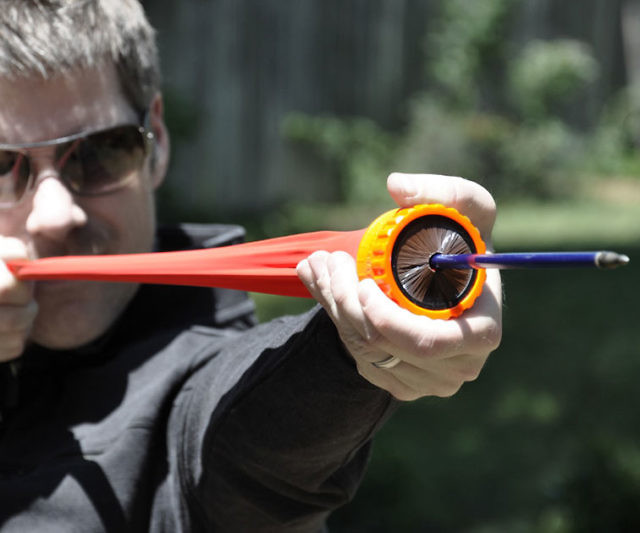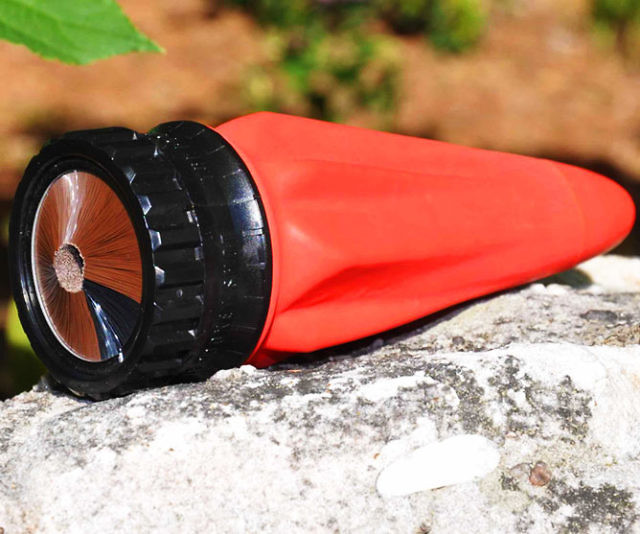
Have you ever tried to get around with an archery bow? Those things are pretty huge and kind of stand out wherever you go. Imagine trying to take the bus with one! But the Pocket Shot Arrow Slingshot lets you achieve almost the same thing with a much, much smaller footprint. It’s a ring-shaped plastic device with a rubber pouch attached to one side and a set of bristles in the middle. The bristles hold your arrow centered while pulling back on the pouch will store up enough kinetic energy to launch your arrows at up to 140 feet per second. Granted that’s nowhere near the 350-400ft/s achieved by a traditional bow and arrow setup, but again, consider the portability. If all you want to do is some target practice and aren’t looking to bring any serious game down, the Pocket Shot is $90.

[ Product Page ]





